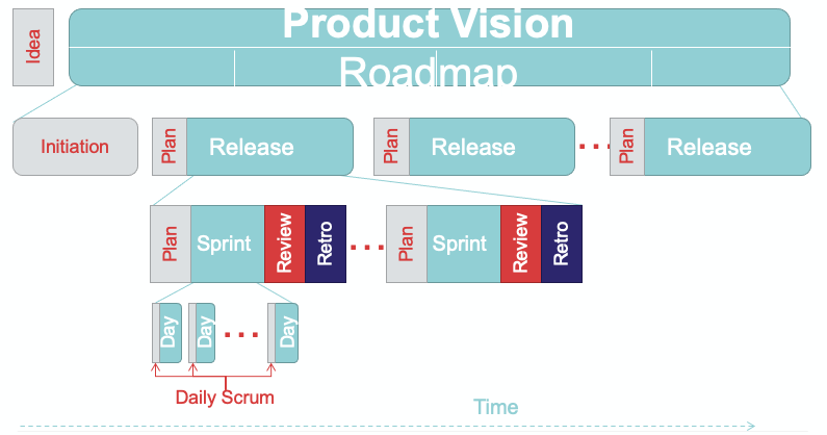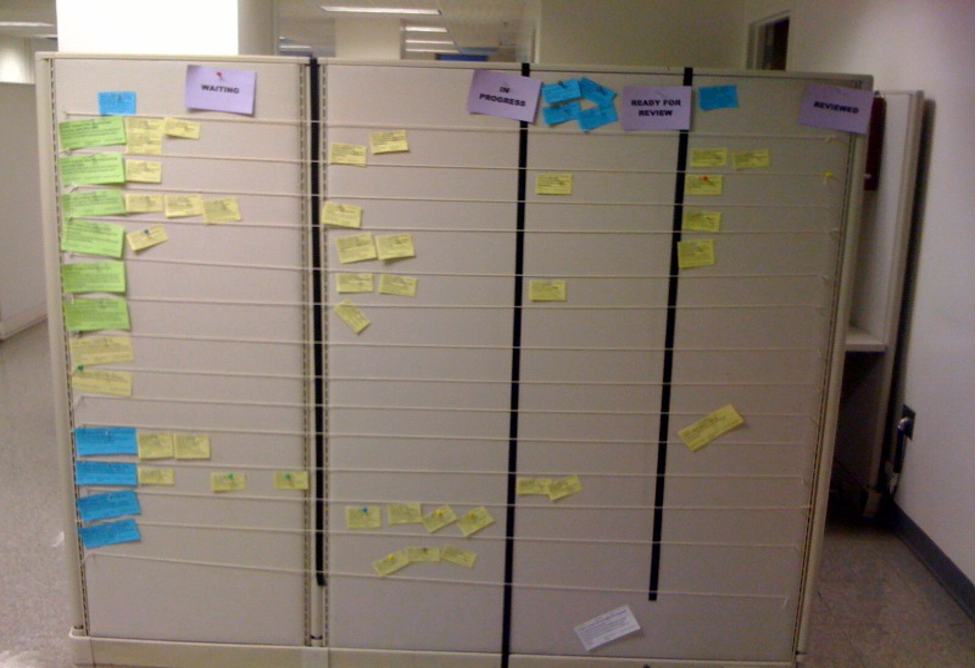As we approach the New Year and begin considering how we can improve our lives in 2021, I have an Agile resolution: stop starting and start finishing…
What do I mean by this? Traditional project management has a strong focus on work in progress and keeping people busy. However, getting work started isn’t the goal; the actual goal is getting things done. And it turns out that the more work you start at once, the slower your work actually gets done, and it’s not a linear relationship.
So, how do we move away from getting things started to getting things done? The first key to true productivity is focus, which is one of the five core values of Scrum. As a reminder, those values are:
- Focus
- Openness
- Respect
- Courage
- Commitment
One of the ways we create focus in Scrum is in the Scrum big picture:

- At the very highest level we have the product vision. The product vision defines why we are building this product, what we are trying to achieve, and confirms that everyone is on the same page.
- The next layer in the big picture is the roadmap. A roadmap could be the major milestones or capabilities being targeted in the upcoming quarters.
- The following layer is the product release, assuming we have multiple sprints between releases. Every release to production should have a release goal or release theme.
- Finally, we have the sprint layer. Every sprint needs a specific sprint goal. What we set out to accomplish each day should map back to the sprint goal, which should have a line of sight back to the release goal or release theme, mapping back to the roadmap milestones, and ultimately to the product vision. Thus, we have a clear understanding of how what we do day-to-day relates to the bigger picture; fostering focus at all levels.
All of this connects back to my Agile resolution to stop starting and start finishing by helping us better manage our priorities. In Scrum, we should always be working on finishing the highest value items first as it related to the vision and roadmap.
Here is an example: this is an actual Scrum board from a Scrum Team:

As you can see, the columns on the Scrum board read:
Waiting | In Progress | Ready for Review | Reviewed
The Scrum board also has the highest priority items at the very top and lowest priority items at the bottom. Each row represents the product backlog item (or user story) using the larger cards, and tasks on the smaller ones for that specific user story.We can observe there are two major issues going on with this picture. The first is that this team is not working in priority order. Why are there lower priority items started when higher priority ones are still waiting? The other issue is too much work in progress. There are more than 20 tasks in the “in progress” and “ready for review” columns. A Scrum development team has 3 to 9 team members; this means each team member currently has anywhere from 3 to potentially close to 10 items in progress. That is way too many.
Your team should be working together to focus on taking a few of the highest priority items and getting those to done. Then, take some of the next highest set, then some of the next highest. It isn’t about how many items you can start; it’s about how many you can get to your definition of done.
Want more tips on how to stop starting and start finishing? See my blog post Two Quick Tips that Will Immediately Make Your Scrum Teams Better. To learn more Agile fundamentals or get certified, check out our upcoming Scrum or Kanban classes.